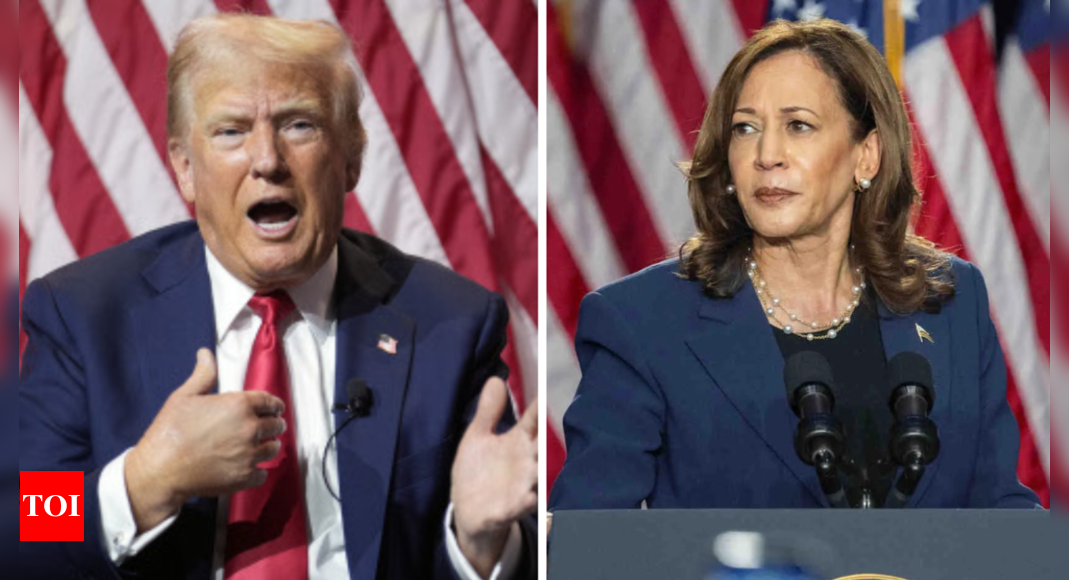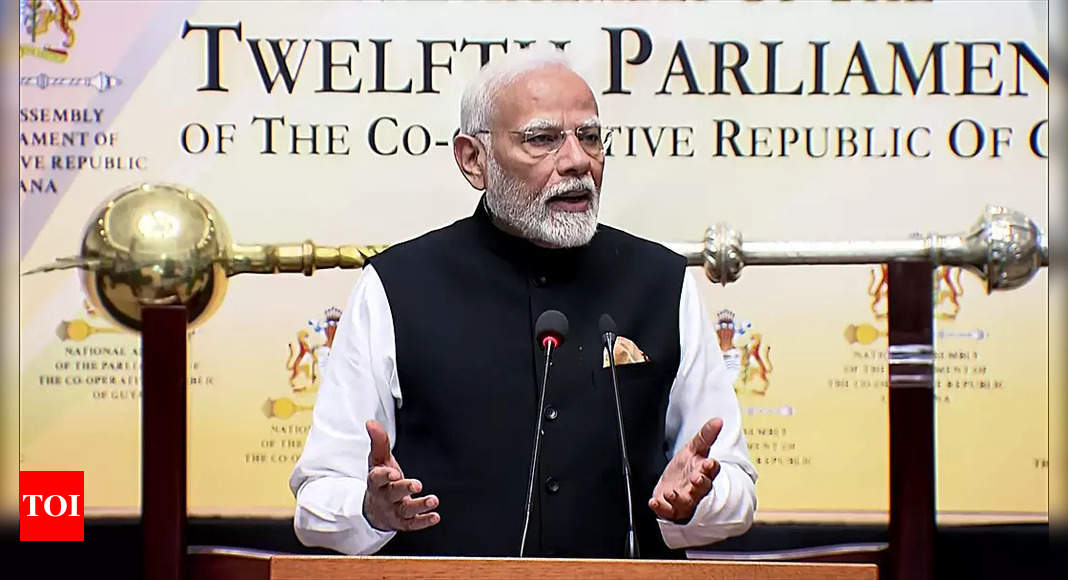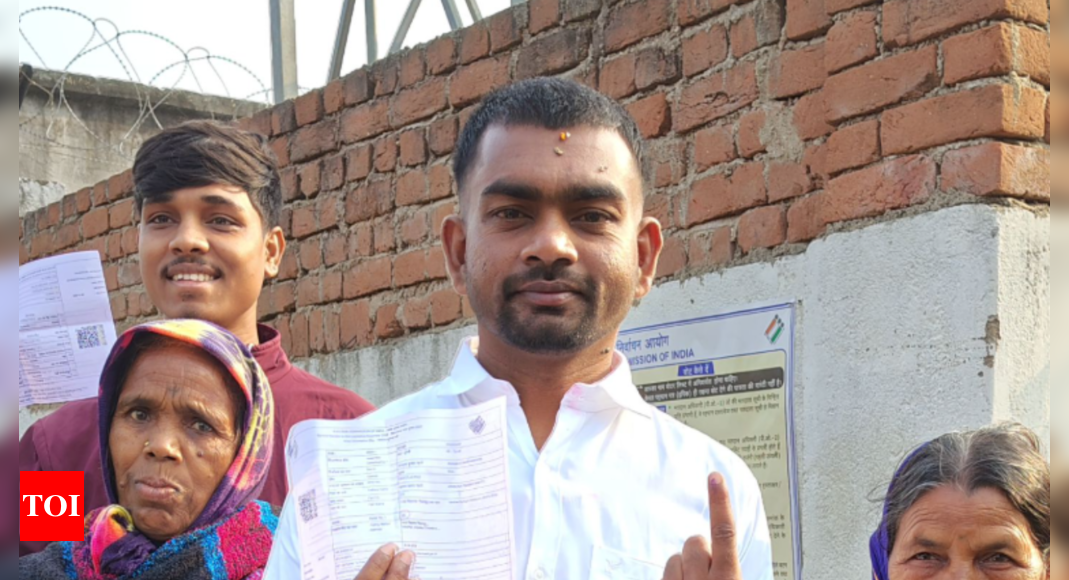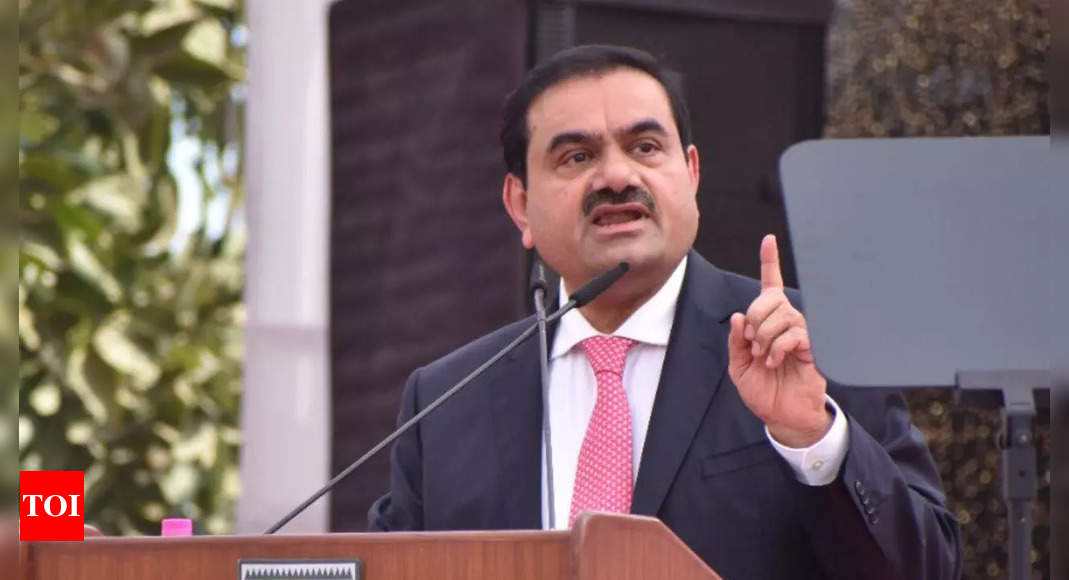
WASHINGTON: For most blacks in America, Donald Trump‘s claims of bettering their lives is a great white lie. But that hasn’t stopped the former President from trying to pry away Black votes from Democrats with the latest tactic of questioning Kamala Harris‘ black identity.
Trump supporters are now bombarding social media with visuals purporting to show Kamala Harris’ Indian heritage, which she has happily owned while embracing a primarily Black identity.Trump’s MAGA flock though cannot seem to get their heads around the fact that people can be bi- or multi-racial.
Hashtags such as #KamalaisIndian and #FakeBlack trended in the MAGAsphere, while Trump himself led the way on Thursday by posting a photo of Kamala dressed in a sari sitting with her maternal grandfather P.V.Gopalan and her grandmother Rajam, with a cheeky message that read: Thank you Kamala for the nice picture you sent from many years ago! Your warmth, friendship, and love of your Indian heritage are very much appreciated.”
Also seen in the photo is Kamala’s sister Maya Lakshmi Harris, who is married to Tony West, a former U.S. associate attorney general. Both Tony West, who is Black, and Maya Harris, who has been Kamala’s campaign manager in the past, are part of her inner political circle.
Since Trump himself said earlier this week that he has known Kamala only indirectly, it is unlikely she sent him the photo. But such claims are par for course considering current political playbook (on both sides) involves fudging, distorting, and conflating issues and data to score political points.
So far, there are no indications that Trump has made any dent in the Democratic stranglehold on the Black vote after initial signs of weaning away some when Biden was the Democratic nominee. A CNN poll of 1,631 registered voters, conducted between July 22-23, found Kamala Harris has the support of 78 percent of Black voters, with Trump at 15 percent. A previous poll taken before Biden pulled out the race showed 23 percent of Black voters backing Trump.
Those numbers seem generous considering Trump received only 8 percent of support from Black voters in 2020, according to Pew Research. One political commentator said the swift shift in support from Trump to Harris among Black voters “tells you something about how fickle Trump’s support was among these voters…Once they had a viable alternative that also happens to share their racial identity, they jumped ship from Trump almost instantly.”
While Trump going below the 8 per cent black vote he got in 2020 is hard to imagine, even some of his supporters are aghast that he inadvertently tried it at the trainwreck of an interview earlier this week at a convention of black journalists. In one crash and burn moment during event, Trump said illegal immigrants are taking away “black jobs,” leading the host to ask “What’s exactly is a black job, sir?” Trump: “A black job is anybody that has a job! That’s what it is.”
On Friday, the multiple gold medal winning American gymnast Simone Biles appeared to take a swipe at Trump for the stumble, tweeting: “I love my black job,” with a photo of her winning a second gold medal at the Paris Olympic Games. Many Black Americans saw that as an insult.
Black Americans are now projected to account for 14 per cent of eligible voters in the US, numbering 34.4 million voters, according to Pew Research Center projections. But not all eligible voters are actually registered to vote. In battleground states such as Georgia, Michigan, and Pennsylvania, they are expected to play a decisive role if Democrats can ensure a good turnout on Election Day.
The MAGA Republican strategy centers on trying to suppress the black vote. According to New York University School of Law’s Brennan Center for Justice, lawmakers in 47 states have introduced more than 360 bills this year with provisions that restrict voting access. This includes steps such as curbing early voting and voting hours ( expansion of which will help blue-collar/shift workers, a predominantly Democratic constituency) and drive through voting (which helps special needs and differently-abled voters).
Trump supporters are now bombarding social media with visuals purporting to show Kamala Harris’ Indian heritage, which she has happily owned while embracing a primarily Black identity.Trump’s MAGA flock though cannot seem to get their heads around the fact that people can be bi- or multi-racial.
Hashtags such as #KamalaisIndian and #FakeBlack trended in the MAGAsphere, while Trump himself led the way on Thursday by posting a photo of Kamala dressed in a sari sitting with her maternal grandfather P.V.Gopalan and her grandmother Rajam, with a cheeky message that read: Thank you Kamala for the nice picture you sent from many years ago! Your warmth, friendship, and love of your Indian heritage are very much appreciated.”
Also seen in the photo is Kamala’s sister Maya Lakshmi Harris, who is married to Tony West, a former U.S. associate attorney general. Both Tony West, who is Black, and Maya Harris, who has been Kamala’s campaign manager in the past, are part of her inner political circle.
Since Trump himself said earlier this week that he has known Kamala only indirectly, it is unlikely she sent him the photo. But such claims are par for course considering current political playbook (on both sides) involves fudging, distorting, and conflating issues and data to score political points.
So far, there are no indications that Trump has made any dent in the Democratic stranglehold on the Black vote after initial signs of weaning away some when Biden was the Democratic nominee. A CNN poll of 1,631 registered voters, conducted between July 22-23, found Kamala Harris has the support of 78 percent of Black voters, with Trump at 15 percent. A previous poll taken before Biden pulled out the race showed 23 percent of Black voters backing Trump.
Those numbers seem generous considering Trump received only 8 percent of support from Black voters in 2020, according to Pew Research. One political commentator said the swift shift in support from Trump to Harris among Black voters “tells you something about how fickle Trump’s support was among these voters…Once they had a viable alternative that also happens to share their racial identity, they jumped ship from Trump almost instantly.”
While Trump going below the 8 per cent black vote he got in 2020 is hard to imagine, even some of his supporters are aghast that he inadvertently tried it at the trainwreck of an interview earlier this week at a convention of black journalists. In one crash and burn moment during event, Trump said illegal immigrants are taking away “black jobs,” leading the host to ask “What’s exactly is a black job, sir?” Trump: “A black job is anybody that has a job! That’s what it is.”
On Friday, the multiple gold medal winning American gymnast Simone Biles appeared to take a swipe at Trump for the stumble, tweeting: “I love my black job,” with a photo of her winning a second gold medal at the Paris Olympic Games. Many Black Americans saw that as an insult.
Black Americans are now projected to account for 14 per cent of eligible voters in the US, numbering 34.4 million voters, according to Pew Research Center projections. But not all eligible voters are actually registered to vote. In battleground states such as Georgia, Michigan, and Pennsylvania, they are expected to play a decisive role if Democrats can ensure a good turnout on Election Day.
The MAGA Republican strategy centers on trying to suppress the black vote. According to New York University School of Law’s Brennan Center for Justice, lawmakers in 47 states have introduced more than 360 bills this year with provisions that restrict voting access. This includes steps such as curbing early voting and voting hours ( expansion of which will help blue-collar/shift workers, a predominantly Democratic constituency) and drive through voting (which helps special needs and differently-abled voters).









